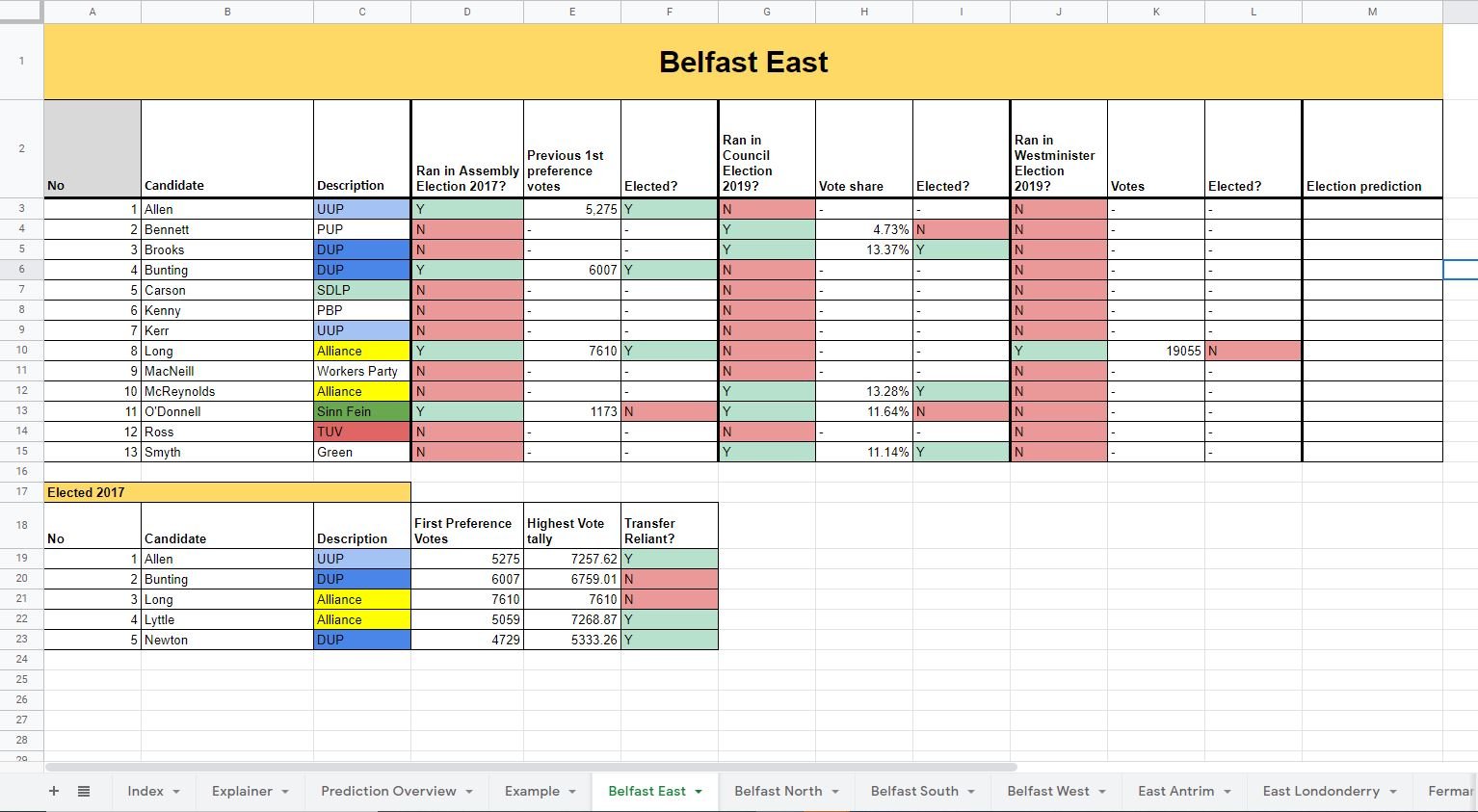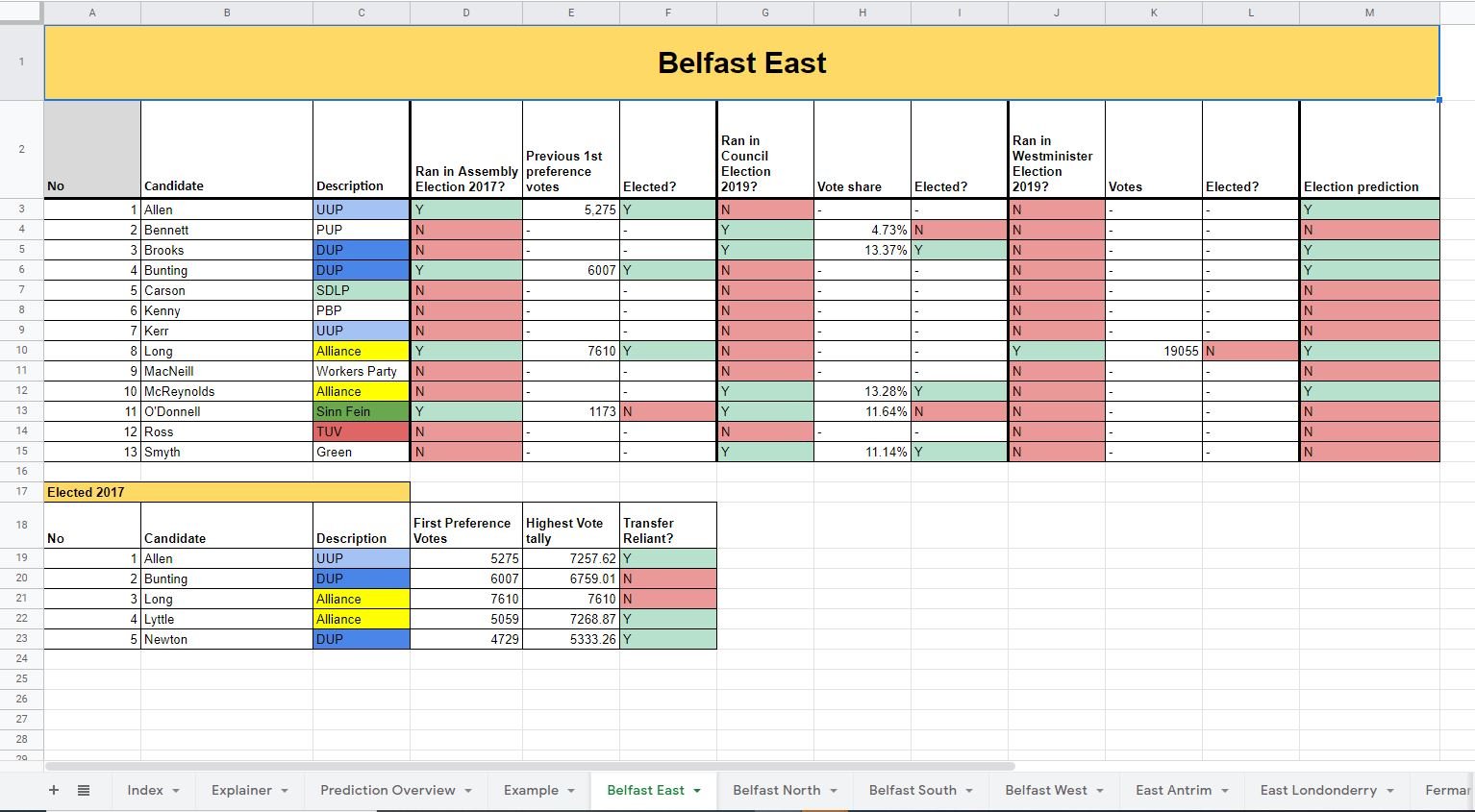Election Prediction Spreadsheet
Link for spreadsheet: https://docs.google.com/spreadsheets/d/1EFQvu-NTrXrYxK1wsEFortp841EJkrTfl9DuNMT97NA/edit?usp=sharing
(Go into file>download>Microsoft excel)
With the election drawing ever closer, many will be making their predictions for how the Assembly will look after the votes have been counted. In many ways it reminded us of the football pullouts which we used to obsess over during the World Cup or Euros. We used to carefully note down which team would edge their way past their possible opponents dependent on recent form and player absences. That is why we created a spreadsheet where we can do the exact same thing, simply replacing recent form for Lucidtalk polls and player absences for the many recent co-options. It should allow you to mull over the possible battles in NI’s 18 constituencies and automatically total all your predictions for you in an easy to read prediction overview page.
Below you can find a short guide explaining how to fill in your predictions:
The spreadsheet opens on the index pages which has a link to every other page on the spreadsheet, you can also use the scrollbar at the bottom to view the different pages. Our spreadsheet contains all 18 different constituencies in NI which you can fill out to auto-complete the prediction overview page. Along with that, pages 22, 23 and 24 provide additional information about the previous assembly election and the recent Lucidtalk polls.
2. If you go to the example page, you can see a pre-filled out example of what each constituency page should look like. The only area which you will have to fill out is highlighted in red below (column M):
If you believe a candidate will get election, simply place a ‘Y’ beside the candidate in column M or an ‘N’ if you don’t believe they will get elected (the N is not necessary but may help you keep track)
3. Below you can see a constituency before it is filled out. On the left (Columns B and C), it lists out all of the candidates running for election in Belfast East and which party each candidate is running for.
Column D tells you if the candidate ran in the previous election, Column E tells you how many votes they received and F tells you if they were elected or not. G,H and I do the same but for the 2019 council elections and J, K and L cover the 2019 Westminster Elections.
The information below the candidates shows you who was elected in the 2017 Assembly Elections, how many first preference votes the MLA received in 2017, their highest vote tally in 2017 and if they were transfer reliant (if they needed transfers to get them over the line). Bunting and Long would have been elected regardless of transfers which is why they have a Y in their column while Allen, Lyttle and Newton all required transfers to reach the required amount of votes for their election.
4. If we fill out the East Belfast constituency election like so (column M now filled in with 5 ‘Y’ representing the five MLAs I believe will be elected in Belfast East in the 2022 Assembly Election - each constituency should have only 5 MLAs elected):
Then the prediction overview page should automatically fill out the Belfast East row for us and automatically list the party totals:
As can be seen above, row 23 shows you the 2017 election results for each party and row 24 shows you the difference between your predictions for 2022 and the results from 2017.
5. If you work your way through all 18 constituencies, you should end up with a prediction overview that adds up to 90 (counted up in column K row 20), representing the 90 MLAs you believe will be elected in the 2022 Assembly Election. See below:








